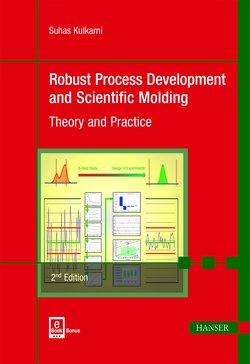Описание книги
This book introduces the concepts of Scientific Molding and Scientific Processing for Injection Molding, geared toward developing a robust, repeatable, and reproducible (3Rs) molding process. It explains the underlying principles of polymer science: the properties that are important to injection molding and their application to molding process development. The effects of polymer morphology, thermal transitions, drying, and rheology on the injection molding process are explained in detail. The development of a robust molding process is broken down into two sections: the Cosmetic Process and the Dimensional Process. Scientific molding procedures to establish a 3R process are provided.
The concept of Design of Experiments (DOEs) for and in injection molding is explained, giving insight into the cosmetic and dimensional process windows. A plan to release qualified molds into production with troubleshooting tips is also provided. Topics that impact a robust process such as the use of regrind, mold cooling, and venting are also described.
Readers will be able to utilize the knowledge gained from the book in their day-to-day operations immediately.
This second edition includes a completely new chapter on Quality Concepts, as well as much additional material throughout, covering fountain flow, factors affecting post mold shrinkage, and factor selections for DOEs. There are also further explanations on several topics, such as in-mold rheology curves, cavity imbalances, intensification ratios, gate seal studies, holding time optimization of hot runner molds, valve gated molds, and parts with large gates. A troubleshooting guide for common molded defects is also provided.
The concept of Design of Experiments (DOEs) for and in injection molding is explained, giving insight into the cosmetic and dimensional process windows. A plan to release qualified molds into production with troubleshooting tips is also provided. Topics that impact a robust process such as the use of regrind, mold cooling, and venting are also described.
Readers will be able to utilize the knowledge gained from the book in their day-to-day operations immediately.
This second edition includes a completely new chapter on Quality Concepts, as well as much additional material throughout, covering fountain flow, factors affecting post mold shrinkage, and factor selections for DOEs. There are also further explanations on several topics, such as in-mold rheology curves, cavity imbalances, intensification ratios, gate seal studies, holding time optimization of hot runner molds, valve gated molds, and parts with large gates. A troubleshooting guide for common molded defects is also provided.
